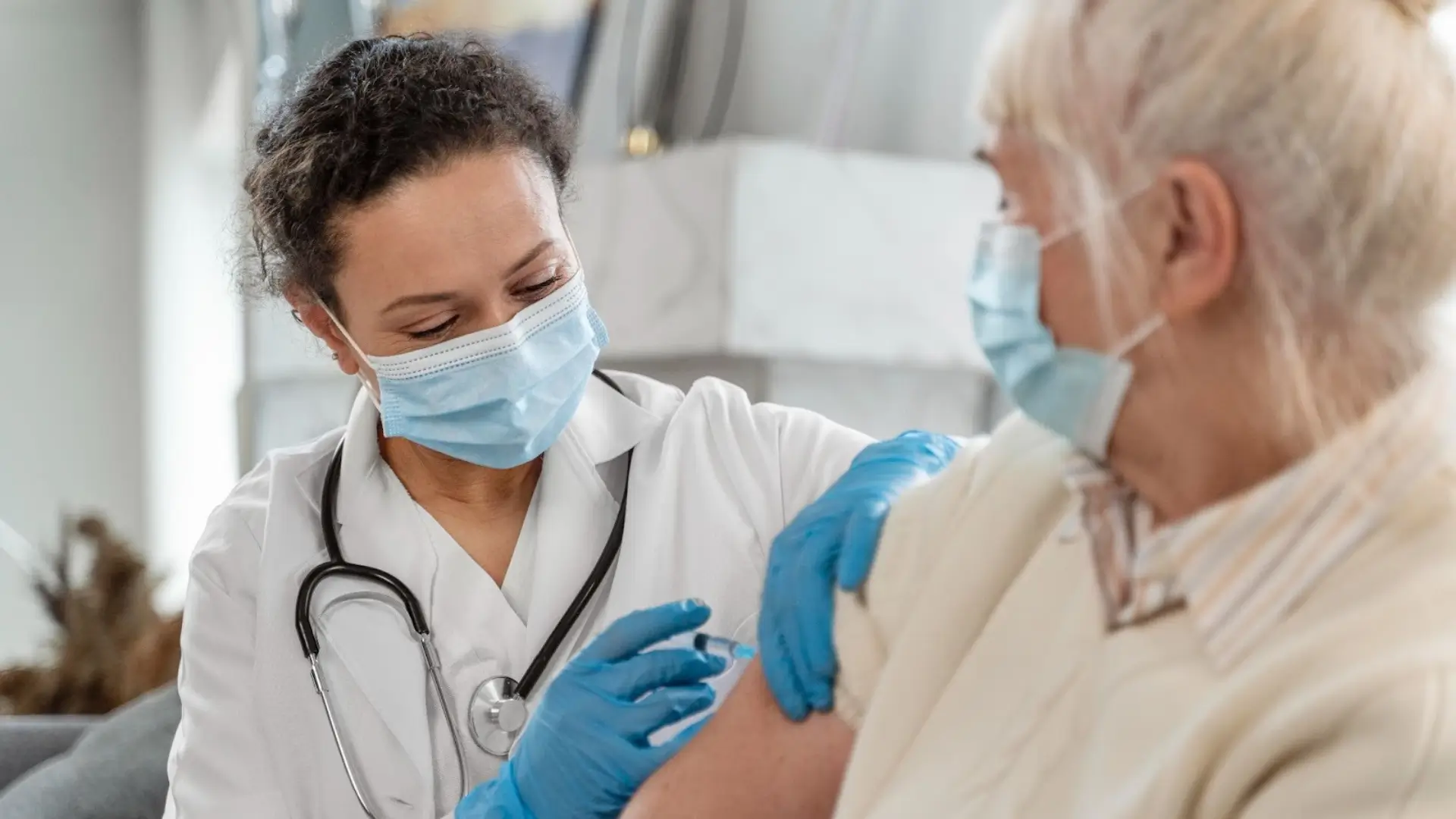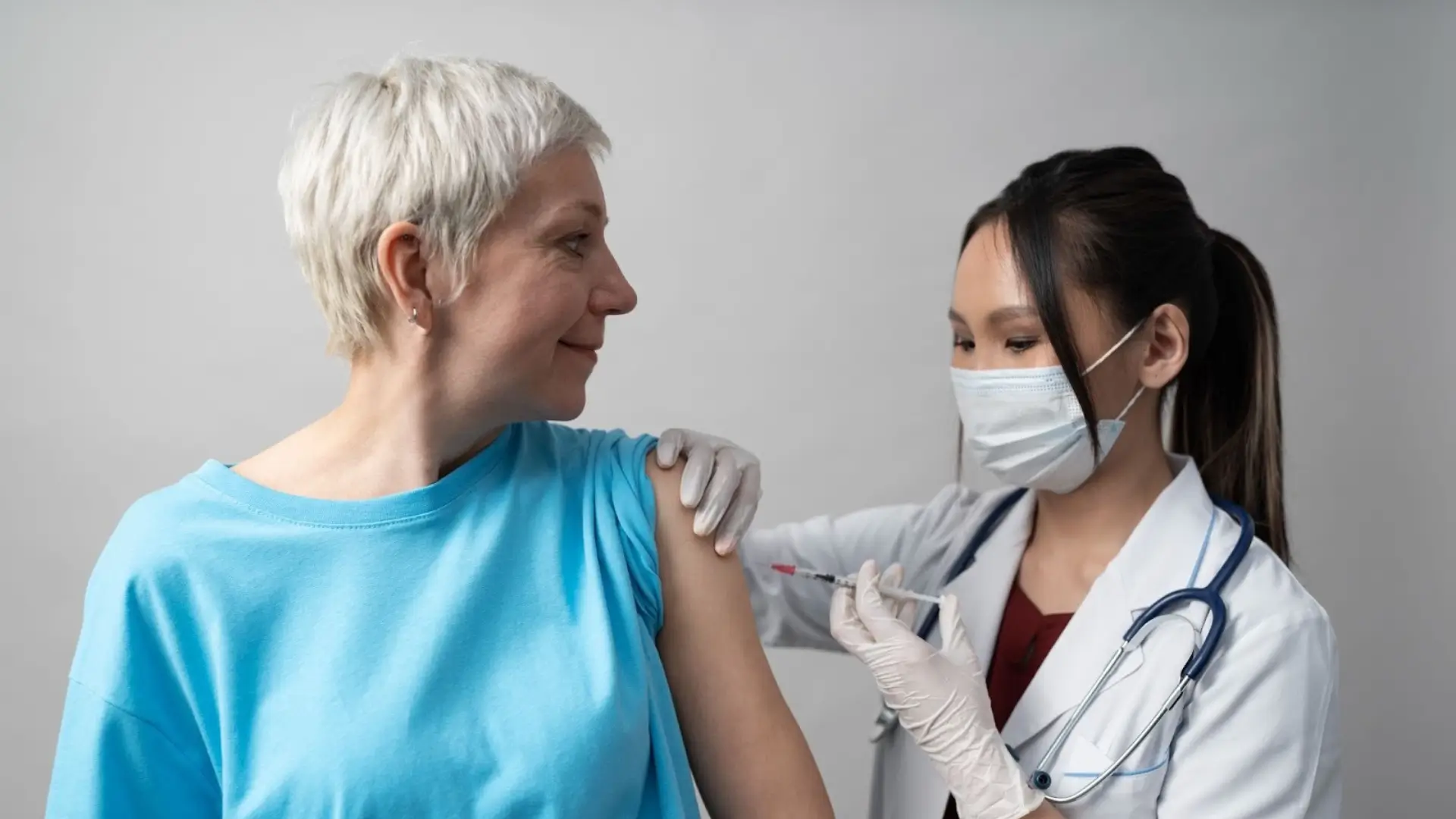
When it comes to treating osteoporosis, one of the most notable advancements is romosozumab, known by its brand name Evenity. The phase III FRAME trial is one of the key studies that demonstrated the powerful impact of romosozumab in increasing bone mineral density (BMD) and reducing the risk of vertebral fractures in postmenopausal women with osteoporosis. These findings have helped establish romosozumab as a vital therapy for women at high risk of osteoporosis-related fractures and complications.
Though Evenity is the name most patients are familiar with, understanding romosozumab’s generic name helps clarify how the medication works in the body and how it fits into the larger landscape of osteoporosis treatment options.
In this article, we’ll explore what romosozumab is, how it supports bone health, and why recognizing its generic name matters for both patients and healthcare providers in managing osteoporosis effectively.
Key Takeaways
- Evenity (romosozumab) is a monoclonal antibody used to treat severe osteoporosis in postmenopausal women at high fracture risk.
- Romosozumab works through a dual mechanism, stimulating bone formation and reducing bone resorption, providing a comprehensive approach to osteoporosis treatment.
- FDA-approved for postmenopausal women, romosozumab is also prescribed off-label for men with osteoporosis, particularly those at high fracture risk.
- Clinical studies show significant improvements in bone mineral density (BMD), particularly at the spine and hip, and fracture risk reductions of up to 73% for vertebral fractures.
- After 12 months of treatment, patients are typically transitioned to maintenance therapy, such as bisphosphonates or denosumab, to preserve bone density gains.
- Cardiovascular safety is a critical consideration, and romosozumab should not be used in patients with a recent history of heart attack or stroke.
About: Doctor Medica is your trusted supplier of top-quality dermal fillers, viscosupplements, and more for your medical practice. We offer genuine products from leading brands at the lowest prices in the market. If you’re looking to order Evenity online for your practice, contact the Doctor Medica today.
Overview of Romosozumab as the Generic Name for Evenity and Its Pharmacologic Class

The generic name for Evenity is romosozumab, a monoclonal antibody used to treat osteoporosis. Unlike many traditional therapies, romosozumab not only reduces bone resorption but also actively stimulates bone formation, helping rebuild bone tissue in patients at high fracture risk.
Romosozumab belongs to the pharmacologic class of monoclonal antibodies, specifically targeting sclerostin, a protein that naturally inhibits bone formation. By blocking this protein, romosozumab activates osteoblasts (the cells that form new bone), leading to increased bone mineral density (BMD) and stronger bones overall.
Understanding what Evenity is and how it works is essential for patients and healthcare providers to navigate its role in osteoporosis management. Romosozumab’s dual-action mechanism sets it apart from traditional antiresorptive therapies, making it a highly effective option for patients with severe osteoporosis or a history of fractures.
Mechanistic Role of Sclerostin Inhibition and Its Anabolic Impact on Bone Metabolism

At the heart of romosozumab’s mechanism of action is its ability to inhibit sclerostin, a glycoprotein produced by osteocytes that naturally limits bone formation. When romosozumab blocks sclerostin, it enhances osteoblast activity. As a result, it triggers a surge in bone formation that significantly increases bone mass and strengthens bone structure.
In addition to stimulating bone formation, romosozumab also exerts a mild antiresorptive effect, reducing osteoclast-mediated bone resorption. This dual action helps patients build new bone while maintaining bone density, offering a comprehensive approach to improving skeletal health.
Clinical trials have shown that romosozumab leads to significant increases in BMD, especially in the spine and hip. These results show how it outperforms other therapies like bisphosphonates or teriparatide.
Structural and Biochemical Properties of Romosozumab as a Humanized IgG2 Antibody
Romosozumab is a humanized monoclonal IgG2 antibody produced by recombinant DNA technology. It targets sclerostin with high precision, guaranteeing effective binding and activation of bone-forming pathways without excessive immune system activation.
The biologic’s serum half-life is around 12-13 days, which supports sustained suppression of sclerostin over the course of treatment. Due to its stability and low immunogenicity, romosozumab has manageable side effects. It’s a first-choice option for patients who may not tolerate oral therapies or traditional bisphosphonates.
Clinical Significance of Romosozumab in Modern Osteoporosis and Bone Health Therapy
Romosozumab represents a significant breakthrough in osteoporosis treatment. Its dual action, which stimulates bone formation while reducing resorption, sets it apart from conventional therapies that only prevent bone loss. This innovative approach is particularly beneficial for patients with severe osteoporosis or those who have not responded to previous therapies.
Clinical Benefits of Romosozumab
- Rapid Increase in Bone Density: Clinical trials like FRAME and ARCH showed significant gains in BMD at both the lumbar spine and hip within 12 months, outperforming bisphosphonates and teriparatide.
- Reduction in Fracture Risk: Romosozumab can reduce the risk of vertebral fractures by up to 73% and clinical fractures by 36% compared to placebo. Data from the ARCH trial shows a 37% reduction in vertebral fractures compared to alendronate.
- Nonvertebral Fracture Reduction: Romosozumab also reduces nonvertebral fractures by 25% (in the FRAME trial) and 54% (in the ARCH trial), offering broader fracture protection.
- Rapid Onset of Action: Unlike many osteoporosis drugs that may take years to show improvements, romosozumab shows measurable bone density changes within months.
- Sequential Therapy Advantage: After completing the 12-month course of romosozumab, patients transition to maintenance therapy with bisphosphonates or denosumab to preserve the bone density gains and prevent future fractures.
Emerging studies also suggest romosozumab may offer benefits in managing glucocorticoid-induced bone loss (GIOP) and certain rare skeletal disorders, although these uses remain investigational.
Conclusion
Evenity’s generic name, romosozumab, marks a significant advancement in the treatment of severe osteoporosis, especially for postmenopausal women at high fracture risk. By targeting sclerostin to stimulate bone formation and reduce resorption, romosozumab offers a dual-action approach that makes it a powerful tool in managing bone health.
Romosozumab’s fast-acting nature, combined with its ability to restore bone strength, positions it as an essential therapy in modern osteoporosis management. After completing 12 months of treatment, patients typically transition to an antiresorptive therapy to maintain gains and prevent fractures. With proper patient selection, cardiovascular monitoring, and post-treatment management, romosozumab can provide long-term bone health and fracture prevention.
FAQs
1. What is the Evenity generic name?
The Evenity generic name is romosozumab, a monoclonal antibody that blocks sclerostin, promoting bone formation and reducing bone resorption.
2. How does romosozumab differ from other osteoporosis drugs?
Unlike traditional treatments that only slow bone loss, romosozumab stimulates bone formation. It also reduces bone resorption, providing a dual-action approach.
3. How do doctors administer Evenity?
Doctors deliver Evenity as two subcutaneous injections (105 mg each) once a month.
4. Can men use romosozumab?
Although romosozumab has FDA approval for postmenopausal women, some practitioners prescribe it off-label for men with osteoporosis in some instances. They particularly consider the therapy for men at high fracture risk or those with low BMD.
References
Lewiecki EM. Romosozumab, clinical trials, and real-world care of patients with osteoporosis. Ann Transl Med. 2020;8(15):974. doi:10.21037/atm.2020.03.196
Bandeira L, Lewiecki EM, Bilezikian JP. Romosozumab for the treatment of osteoporosis. Expert Opin Biol Ther. 2017;17(2):255-263. doi:10.1080/14712598.2017.1280455
Related Articles
Joanna Carr
Euflexxa vs Orthovisc – Which Is the More Effective OA Treatment?
Compare Euflexxa and Orthovisc, two leading viscosupplements for knee osteoarthritis. Explore differences in molecular weight, origin, dosing schedule...
Joanna Carr
Perfectha vs Juvederm – How Do They Compare?
Compare Perfectha and Juvederm—explore their formulations, benefits, and ideal applications to determine which dermal filler is best for your aestheti...
Joanna Carr
Depo Provera vs Nexplanon – Comparing Birth Control Treatments
Depo Provera and Nexplanon are two different contraceptive methods with distinct administration techniques. Read more on Doctor Medica.


